Guest Ranching for Life
WHAT GUEST RANCH OPERATORS SAY ABOUT THE BUSINESS THEY LIVE: YOU HAVE TO HAVE A PASSION FOR PEOPLE AND A LOVE OF THE LAND.
WE SPOKE WITH four Western Landowners Alliance members about the guest ranches they own and operate. We wanted to know: How does your operation impact your community? What do you hope guests get out of a visit to your ranch? And what do other landowners thinking about diving into the hospitality business need to know before getting started?
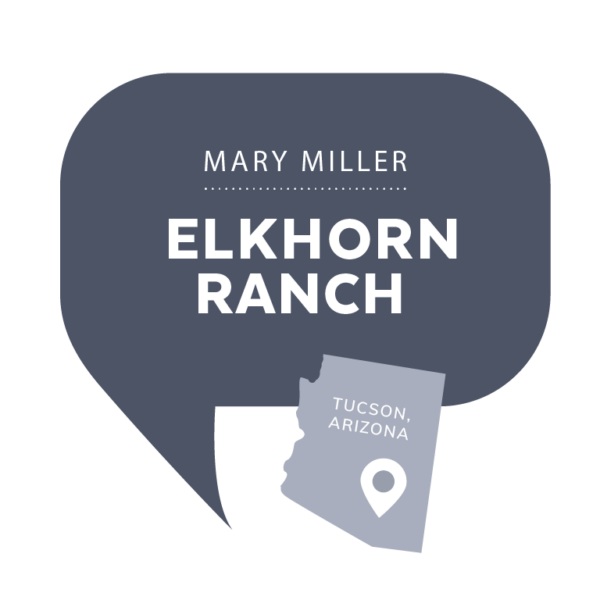
Mary Miller: Elkhorn Ranch
In the mountainous Sonoran Desert southwest of Tucson, the Elkhorn Ranch welcomes guests looking for ways to connect with this unique and rugged landscape from the saddle. The first generation of the Miller family, Grace and Ernest, purchased Elkhorn Ranch in 1945. It had been a boys ranch school, which set the stage well for converting it to a dude ranch (also known as guest ranch) operation. Cattle ranching continued alongside the guest operation until the early 1980s, when the second-generation Millers, Jan and Bob, made the decision to get out of the cattle business following a long period of intense drought. The ranch’s size more economically and ecologically matched a focus on a range program that supported their 100-head horse herd.
Elkhorn raises Percheron–Thoroughbred–Quarter Horse cross-bred horses for its guests’ use. The herd is fully pasture fed and the Millers work closely with the US Natural Resource Conservation Service to monitor range conditions and continuously adapt their grazing rotation system. The third generation of the family, Mary and Charley, and Anne and Tom, now manage the ranch and educate guests about their ranching and conservation work, along with helping them enjoy the spectacular surroundings.
“We’re surrounded by cattle ranches. Our guests see for the first time what ranchers do, come to understand our western ways and understand resource management,” said Mary. “We can provide education in a soft way to our guests.” The ranch is also a founding member of the local landowner-led conservation group, Altar Valley Conservation Alliance. “Elkhorn guests from all over the country support and donate to the Altar Valley Conservation Alliance,” she noted.
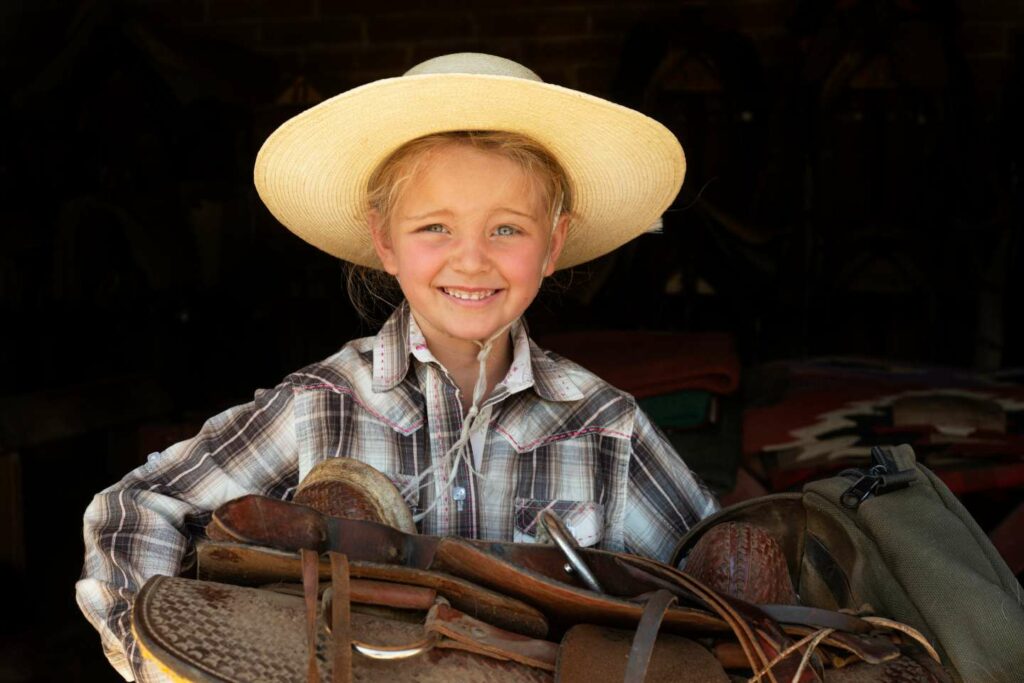
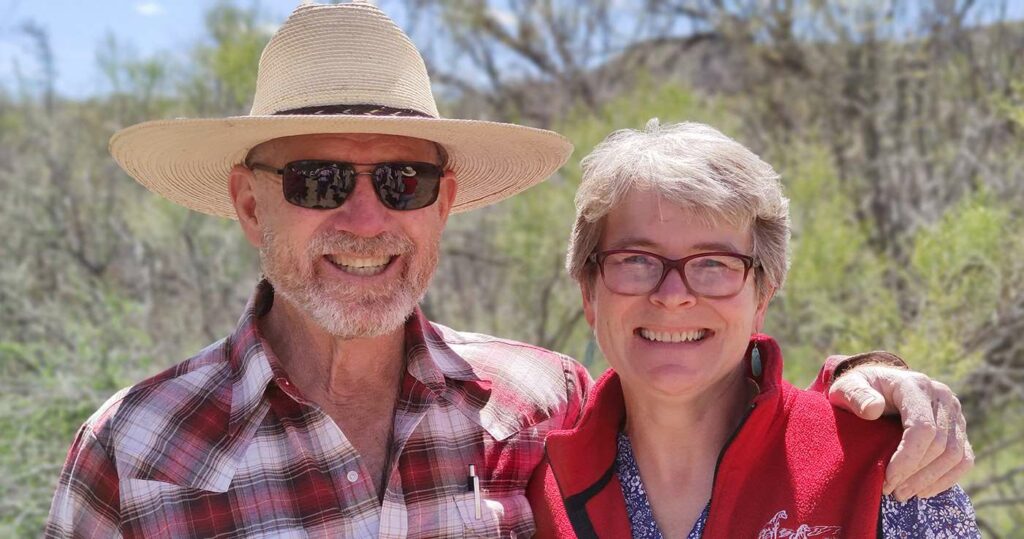
Because the daytime desert temperatures in the summer push regularly into the triple digits, the Elkhorn’s busy season is mid-October to the end of April. The ranch employs 10 people year round, mostly family, and has 22 people staff-ing the ranch during the guest season.“We are so fortunate that our daughters, after graduating from college, returned to the ranch, one in hospitality and one in the horse program,” said Mary. Their seasonal staff come from all over the country to work at the ranch, and both guests and family enjoy the diversity.
For people considering adding guest ranching to their operation, Mary advised ensuring that you have the infrastructure in place before you start. “It may sound romantic and easy, but it’s hard work,” Mary said. The Elkhorn has found its niche in horseback riding: it is compatible with their land and resources, is interesting for the family, and stands out in their region to attract guests. Finally, Mary noted, “don’t overlook how challenging it can be to find good people to run your programs.” A small operation still has the same types of jobs (e.g., meals, housekeeping, programming, reservations, marketing, etc.) as a big operation, but can support fewer staff to complete them all. Everyone has to be comfortable wearing multiple hats.
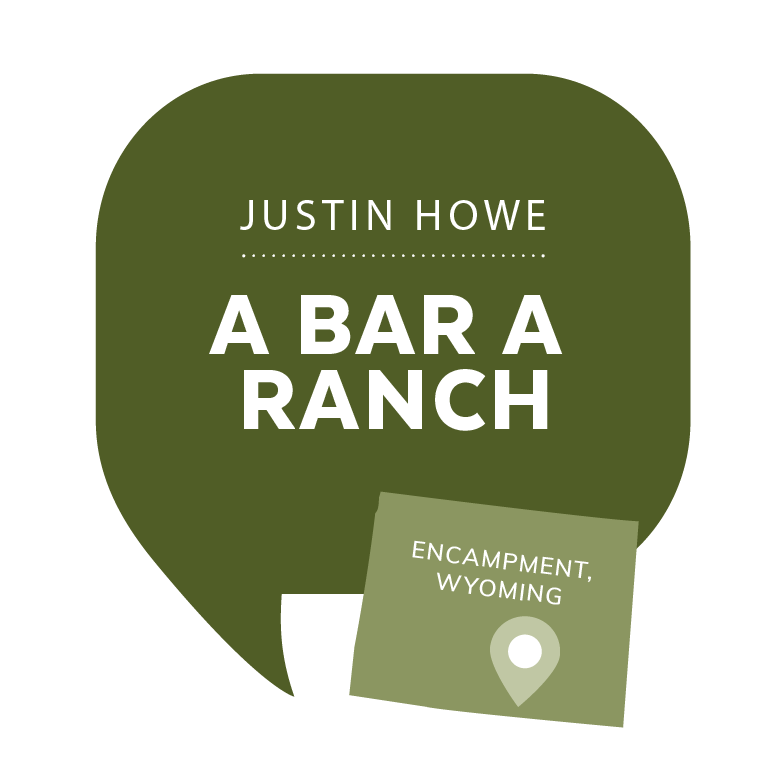
JUSTIN HOWE: A BAR A RANCH
After a career in water education, Justin Howe and his wife Lissa returned to manage the A Bar A ranch in 2008, taking over from his mom and dad, who’d been managing the ranch since 1984. The ranch is one of the oldest and largest guest ranches in Wyoming, with roots going back 100 years.
From May through September, the ranch is bustling with 110 guests each week who can enjoy activities ranging from fly fishing, horseback riding and skeet shooting to golf, tennis and special children’s programs. Families return year after year. Last summer A Bar A hosted a family who had just arrived with their new grandchild, whois the sixth generation of that family to visit. “Every Sunday when people checkin, it feels like a family reunion. Your kids grow up with their kids, and you become part of their memories, as they become part of yours. It’s a heartfelt connection,” Justin told WesternLandowners Alliance.
The 100,000-acre ranch is also home to a 6,000-head cattle operation. Each Tuesday at the breakfast cookout, Justin talks with the guests about what the ranch has experienced over the past year. “It may be the price of fuel, the wildfires, the weather and how it all impacts the ranch. Or I may talk about wildlife-friendly fencing, the research we’re doing to encourage propagation of trout and the challenges that predators can bring to managing our cattle,” he said.
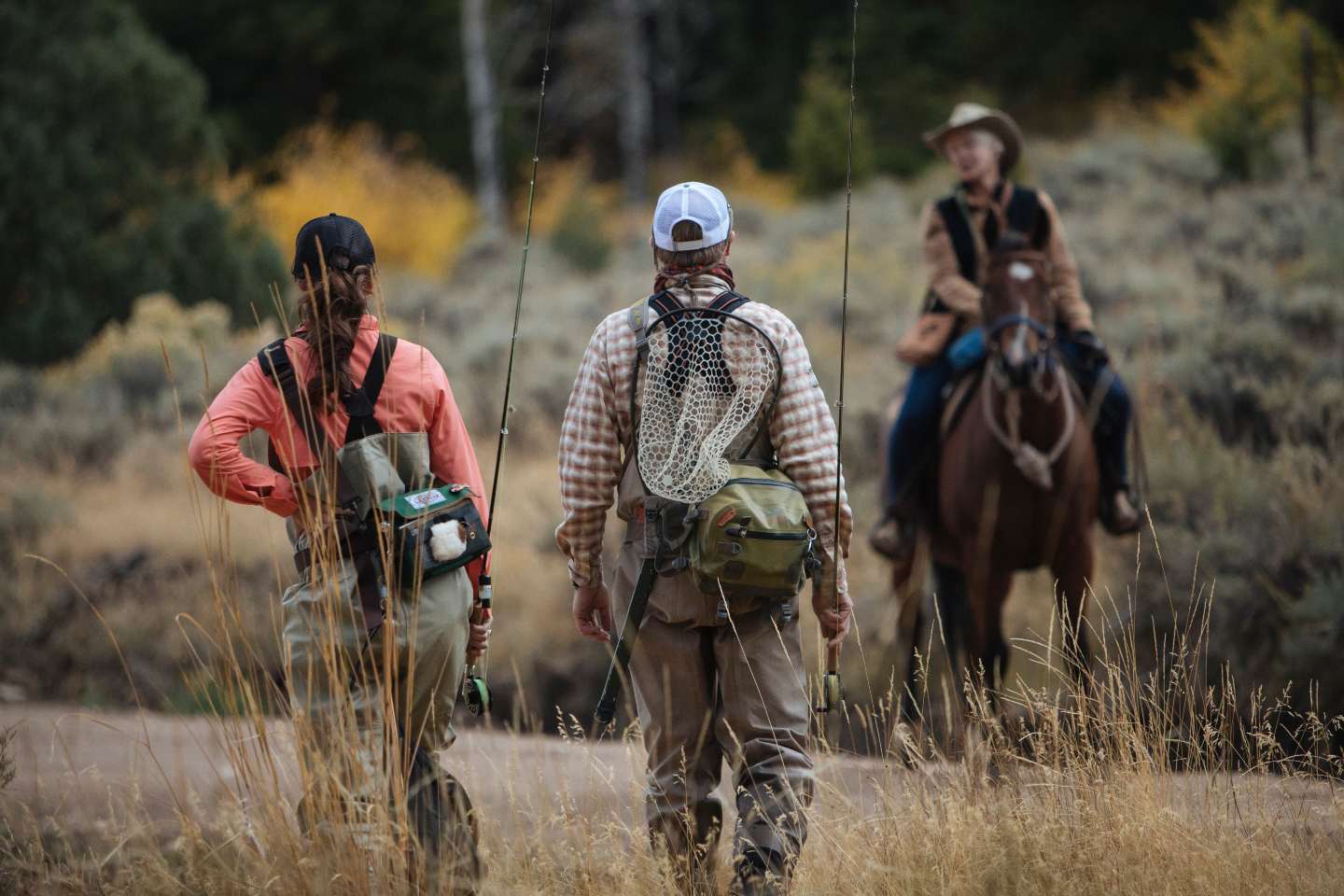
He hopes that with education and exposure, the guests will take away a better understanding of what the ranch is doing to knit together agriculture, conservation and hospitality, and what life looks like through the eyes of ranch managers throughout the West. “I want our guests to look at a spectacular open space and see more than just the scenery,” he added.
The A Bar A employs 15 people year-round and 115 people each summer. “The ranch has a big impact on the local economy, said Justin. “Staff go into town and frequent local restaurants, and we purchase items at the hardware store, the greenhouse, the florist and so much more.
His advice to someone contemplating a guest ranch operation is to stay true to your roots and think about the parts you like and the parts that don’t appeal. “At the end of the day, it’s truly all about relationships,” he said. “You have to like people. It’s a relationship business, and that’s what makes it so satisfying for us.”
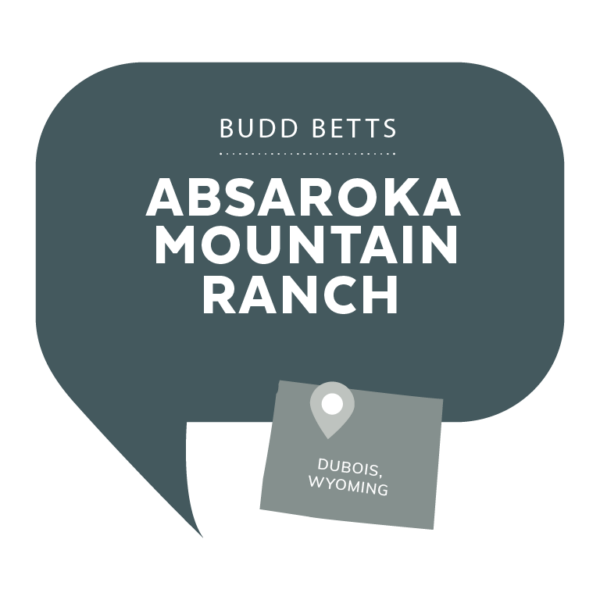
BUDD BETTS: ABSAROKA MOUNTAIN RANCH
Budd and Emi Betts have run Absaroka Ranch outside of Dubois, Wyoming, for over 40 years. The family-owned guest ranch is located in the shadow of the Wind River Range, an hour outside of Grand Teton National Park. They’ve hosted women’s riding groups, yoga and photography workshops, weddings and family reunions, but regular family vacations are the backbone of their operation. “It’s so gratifying to have kids who were 8 or 9 years old now returning with their own families!” Budd exclaimed.
The ranch is a member of the Wyoming Dude Ranchers Association, which runs a directory, but most of their marketing continues to be word of mouth and returning satisfied guests. Horseback riding is the main attraction for the dude ranchers, but come autumn, the operation shifts to an elk hunter’s paradise.
“You’ve got to have plenty of grit, and a wide variety of hands-on skills, like carpentry and plumbing.”
Budd Betts
Budd and Emi recently turned over day-to-day operations to their daughter, Lindsay, and her husband, Brooklyn Judd, but they are far from retired during the summer. “It’s [still] a 24/7 job,” Budd remarked. In the height of the season, more than half of the ranch’s employees are locally based. College students seeking summer employment round out the rest of the crew. Lindsay and Brooklyn buy as much as they can locally, hoping to have a positive impact on the local economy.
Budd explained that he didn’t go into guest ranching to get rich. After graduating from Bowdoin College in Maine and the University of Wyoming, Budd worked in finance in New York City. Love of the land pulled him back to Wyoming, and he saved enough to purchase Absaroka Ranch. He did it, he told Western Landowners Alliance, because he loved the land, the lifestyle and how it allowed him to contribute to society. He was excited to take care of a place that was still as wild as when it was homesteaded a century ago.
Budd’s top passion is in connecting his guests to the landscape he loves. “Sharing our knowledge and love of the land with our guests, be it on a long trail ride or at cocktail hour, is a real gift,” he said.“Hopefully they’ll serve as our ambassadors when they return to their own hometowns. We talk to them about land conservation, land ethics and the challenges we face as ranchers. The message I hope they take home is that we see ourselves primarily as land stewards, and we’re doing our very best to get it right.”
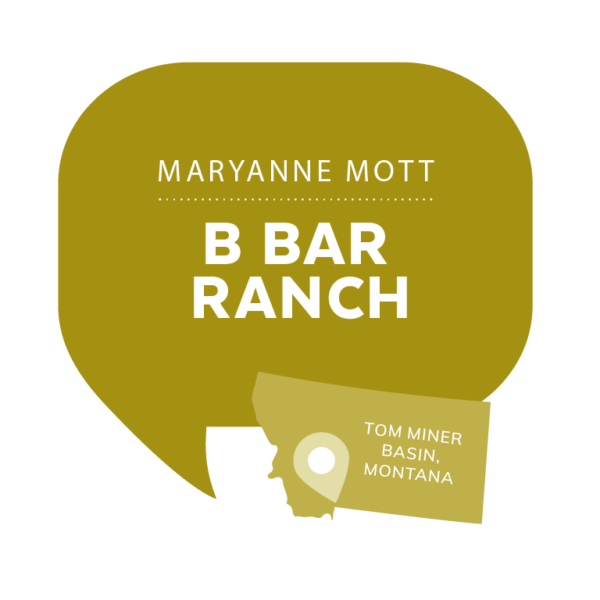
MARYANNE MOTT: B BAR RANCH
Maryanne Mott was approached by “Off the Beaten Path” in 1990 to host small group gatherings at her ranch, the B Bar Ranch, located just north of Yellowstone National Park. Today, groups contact her directly to visit the ranch for dream workshops, yoga retreats, corporate team building and Road Scholar travel tours. “We’re not a dude ranch but a destination,” she said. The ranch also welcomes families, and Maryanne takes pride in offering guests personalized service and curating a unique experience at the B Bar, be it for a workshop, family reunion or mile-stone celebration.
Maryanne delights in sharing with guests the daily activities of the ranch with the values that underlie them. “We envision the ranch as an example of a healthy, thriving ecosystem, including the people and guests within it,” she explained. Maryanne cites the low stress management of their herd of Ancient White Park cattle as an outstanding example of how the ranch translates their values into action. The cattle are unique: their lineage dates back to the Celts and Druids in England.
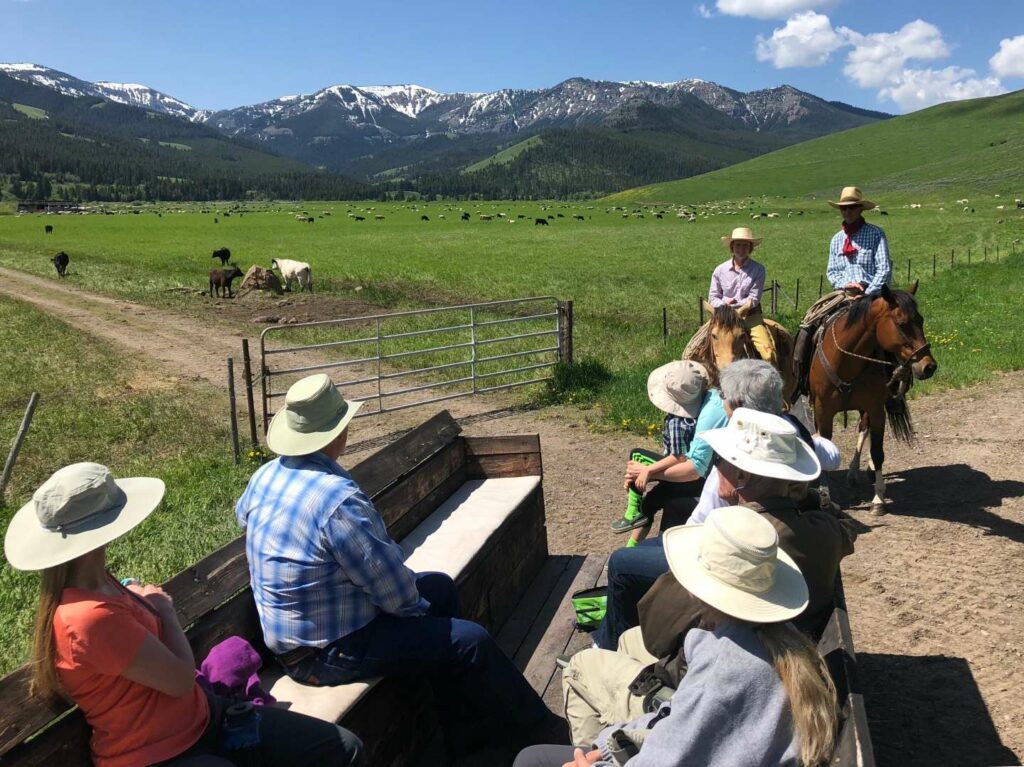
The main challenge she’s facing right now is finding people to work on the ranch. “It’s a very competitive market,” she said.They rely on an interconnect-ed network of local vendors and independent business people to fulfill the needs of the guests.“We’re delighted to have great relationships with our local fish-ing guides, horseback riding outfits, local musicians and even a masseuse if a guest requests a massage after a long day of hiking during their stay,” Maryanne added. Guests also enjoy the artwork by regional artists portraying the West’s ranching and wildlife heritage.
Guests return to the B Bar Ranch year after year. Some guests have been coming for as many as 30 years. “We’ve been honored to be part of many milestone events in our guests’ lives,” Maryanne remarked.“Likewise, many of our longtime guests have experienced the challenges and thrills of living in the Tom Miner Basin. They’ve seen us through all of our learning and development, in cattle ranching, sustain-able agriculture and providing habitat for wildlife. They’ve grown right along with us, as we continue to adopt ecologically responsible practices. My hope would be that they bring a little – or a lot – of the ranch’s values back home with them and incorporate them into their own lives.”
Sorry, the comment form is closed at this time.


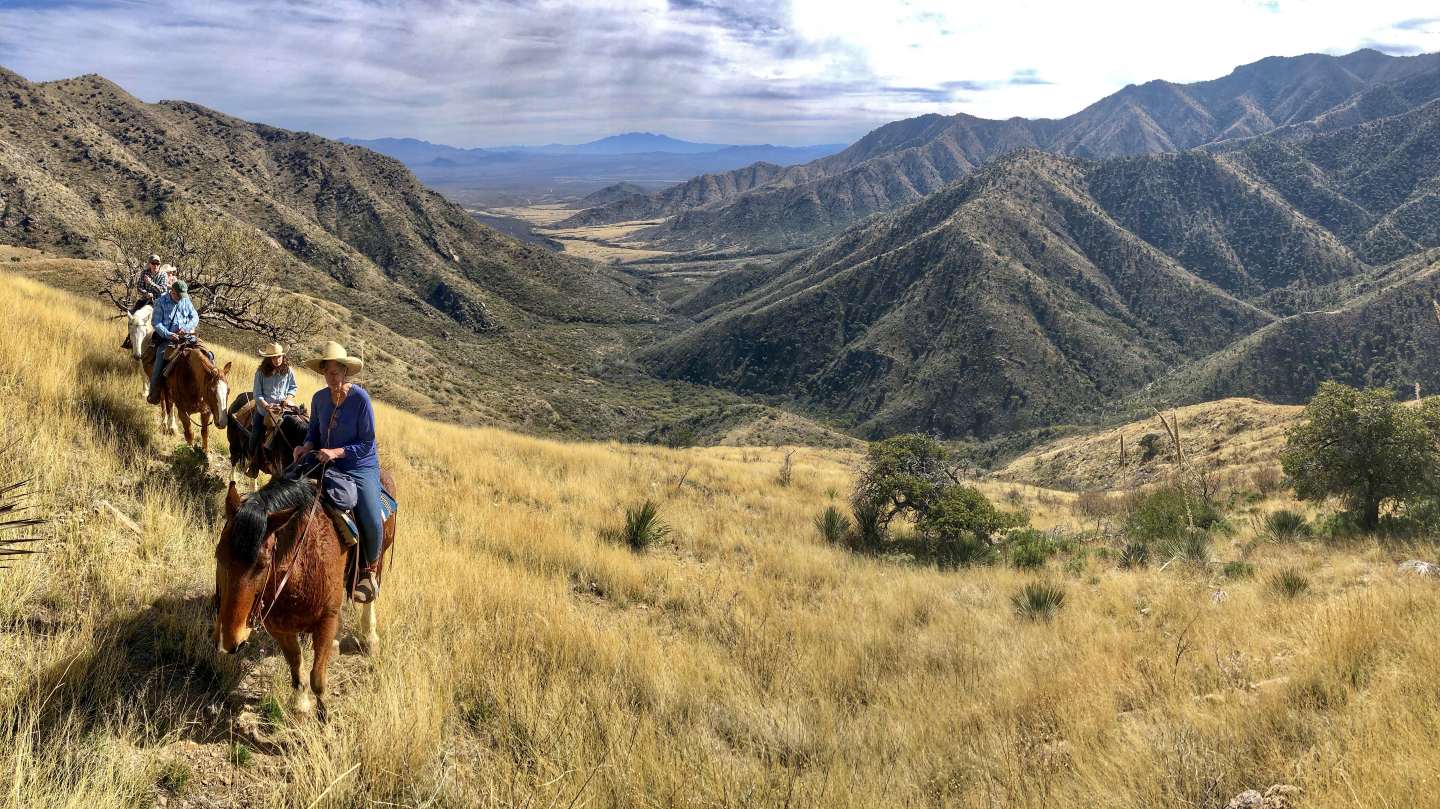
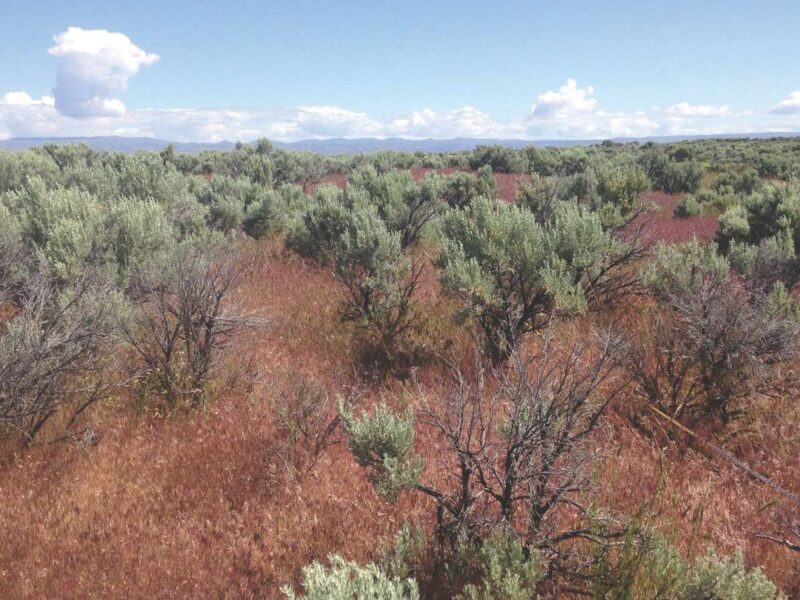
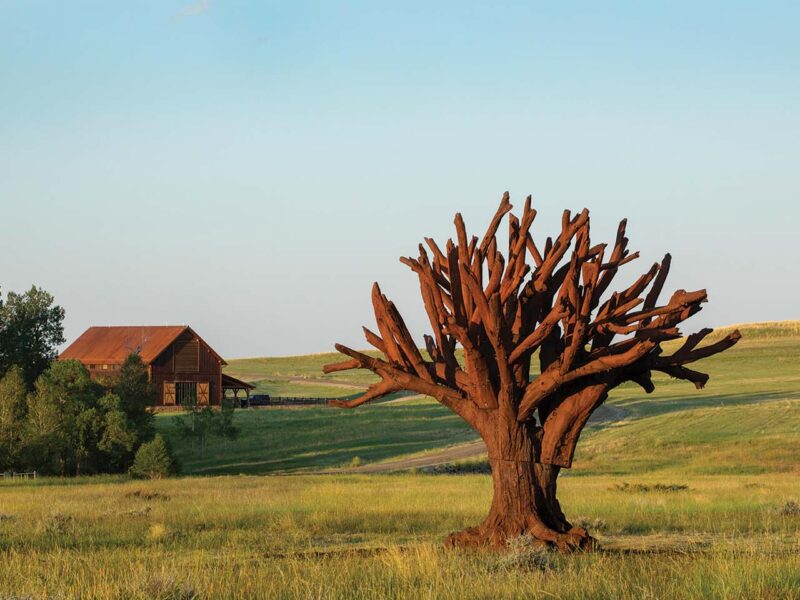
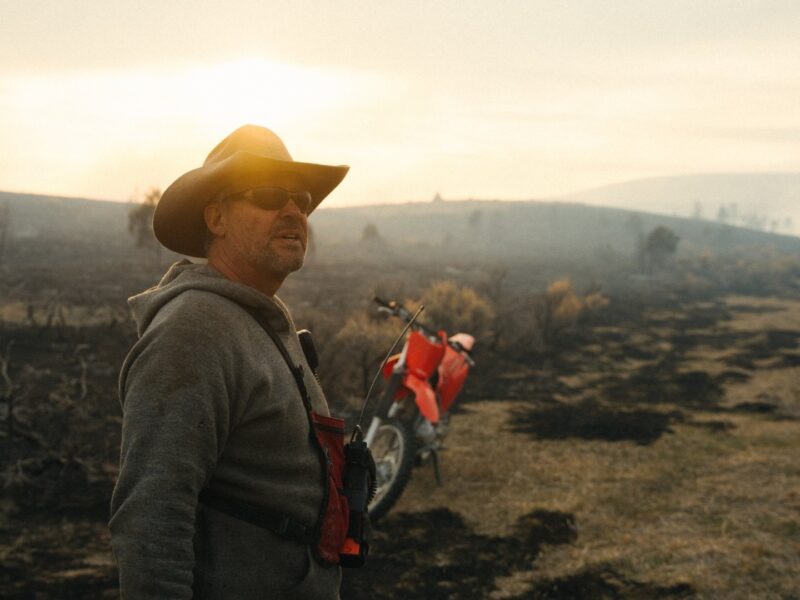
Kate Hartzell
Good article, Lou. We have really enjoyed our stays on.’dude ranches.’ You should talk to ranchers that run summer camps as well. Jessica can connect you to a couple.